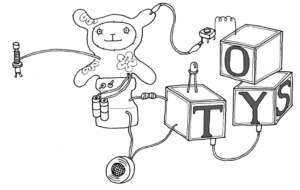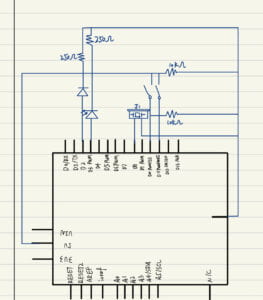Recitation 2: Arduino Basics
Question 1:Propose another kind of creative button you could use in Circuit 3 to make the game more interactive. Read and use some material from the Physical Computing, Introduction Chapter (p. xvii – p. xxix) to explain why this button would make this game more interactive. Answer:I’d like to replace the button with a mat with a button inside it, and let players stamp on it as quickly and frequently as possible. Explanation: “Some of the best and easiest sensors available to us are geared towards touch, but they’re usually aimed at your hands. There is no reason this has to be the case, however, and most sensors designed for hands can be readily adapted to respond to other body parts.”(O’Sullivan, Dan, and Tom Igoe. “Touch Me.” Physical Computing, Course, Cambridge, MA, 2004.) I think letting the players interact with the device with their feet can make them exercise more and be more engaged in this game, which makes it more interactive.
Question 2: Why did we use a 10 kOhm resistor with each push button? Answer: Because the input pin need to be connected to something when the button is not pressed, in order to constantly read low. The resistor here acts as a pull-down resistor.
Question 3: In the book Getting Started with Arduino there is a clear description about the “Arduino Way” in chapter 2. Find a project that you find interesting that can be used as an example for these kind of projects. Cite it in adequate manner, include a picture, and explain the reasons that you chose it.
Answer: I’d like to choose Hacking Toys. “Toys are a fantastic source of cheap technology to hack and reuse, as evidenced by the practise of circuit bending mentioned earlier. With the current influx of thousands of very cheap high-tech toys form China, you can build quick ideas with a few noisy cats and a couple of light swords.”(Banzi, Massimo, and Michael Shiloh. “The Arduino Way.” Getting Started with Arduino, Maker Media, Sebastopol, CA, 2014.

Explanation: I think hacking toys can be quite interesting, and the appearance of a toy is more attractive to human, which makes the project more interactive. As the toy’s shape has already been determined, it can also cut off the effort to design the device, as well as reuse discarded toys and save resources.

